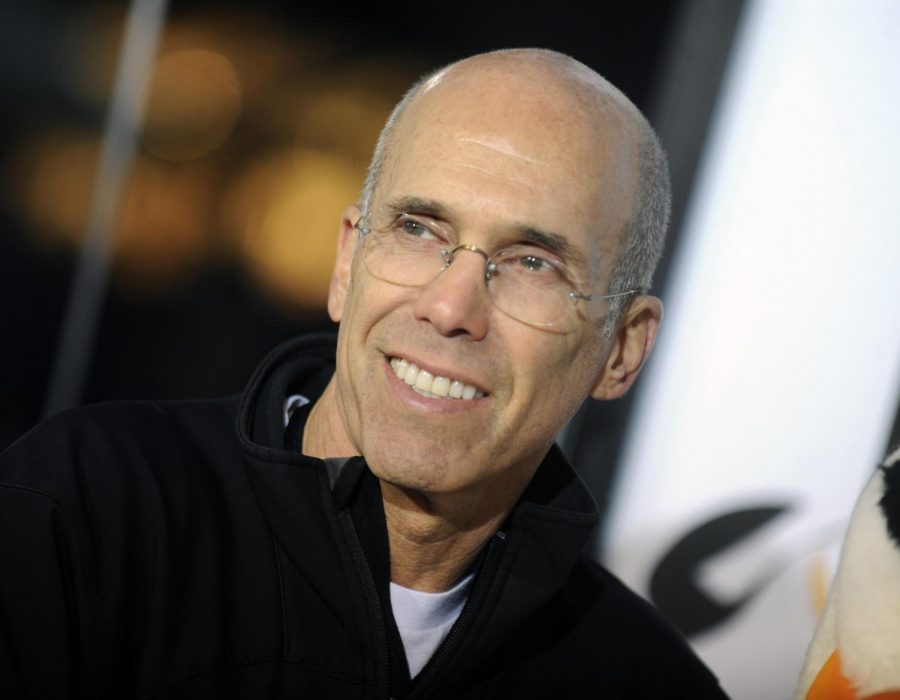Does Quibi have what it takes to survive the streaming wars?
Copy Editor Taylor Lien explains Jeffrey Katzenberg’s (above) latest business venture, Quibi, a paid streaming service exclusively available on smartphones. The service is slated to be released in April 2020.
Feb 24, 2020
Quibi is one of the most recent entries into the streaming service landscape. It was founded in 2018 by Jeffery Katzenberg and is planned to launch in April of 2020. The name Jeffery Katzenberg may sound familiar to anyone aware of the history of the Walt Disney Company over the last few decades. Katzenberg is well-known for being chairman of Disney and head of Disney Animation during the Disney Renaissance in the 1990s which produced many of its most famous and financially successful films, such as “The Little Mermaid,” “Aladdin” and “Beauty and the Beast,” just to name a few.
It was believed at the time he was positioned to succeed Michael Eisner as CEO, but tensions between Roy E. Disney, the nephew of Walt himself and son of Roy Disney, his father meant that Katzenberg exited the company and went on to create Dreamworks animation, and later release Shrek in 2004 as a satire of the Walt Disney Company.
The situation and corporate politics involved are fascinating and complicated and I would highly suggest Lindsay Ellis’s videos on the subject. Disney is an important part of this story since the CEO of Quibi Meg Whitman has also served in high positions within both Disney and Dreamworks.
Besides the slightly controversial founder, Quibi promises bite-sized content in a variety of formats in ten-minute increments or less. The platform has a number of big names attached from Chrissy Teigen to Guillermo del Toro doing unscripted programming and scripted horror, respectively.
The service will cost $5 a month for ad-supported content with about 1 to 2 ads per episode. An ad-free experience will cost you $8 per month. It is also worth mentioning Quibi will only be available to watch on your phone and from various ad spots I’ve seen, it seems like the programming may be in vertical video similar to longer-form Instagram TV content.
Various programs will have different release schedules with varying levels of gimmickiness. One that definitely falls into this category is Speilberg’s “Horror After Dark.” According to various sources, this series will be available only to watch at night. Considering the major decrease in live television viewing and the popularity of “appointment television,” or watching live television programming on a weekly basis, the choice of this type of release schedule reads as out of step with current trends.
According to much of the marketing I’ve been served, it seems as if Quibi sees itself as a big disrupter to short-form, mobile-only platforms such as Snapchat’s Discover feature, Instagram TV and, most recently, Tik Tok. Yet, an obvious comparison between all three of these platforms or features of these platforms is that they are completely free through ad-support. If Quibi is really trying to reach a similar demographic or even the youngest of Millennials, $5 a month for yet another streaming service that you can only access on your phone seems like it will be a hard sell.
YouTube is a platform I frequently watch on my phone, but the cross-device appeal cannot be ignored. YouTube is also ad-supported and their version of an ad-free service was not the massive hit it had been expected to be and was revamped and rebranded to include more features to entice viewers. For many of us, we grew up around ad-supported platforms, so the cost is not worth the added convenience. Quibi’s adoption of a similar model to Hulu with tiered subscriptions in relation to ads is a big bet on the desire from viewers to see the content only Quibi has to offer.
An undercurrent of the entire issue of new streaming services is the sheer amount of content that exists. I have previously written about Peak TV and whether or not it is benefitting the consumer and the industry as a whole. Quibi doesn’t neatly fit into any traditional television boxes, but that does not mean it is exempt from the overload of content we are subjected to on a daily basis.
I’m not of the opinion that social media and more traditional film and television are fighting for the attention of younger demographics since in the privacy of your home many can be consumed simultaneously. Since Quibi demands all of our attention, even in 5-minute chunks, it will be interesting to see the consumer response. I think a platform like this is a disruptor, but not necessarily in the right ways.
With the media landscape as crowded as it is, a clear vision about what needs a service fulfills and who it is for seems more important than ever. More than anything else, I don’t know who Quibi is supposed to be for considering some of the talent and projects they have announced. It’s possible they are trying to capture a large range of age demographics, but a streaming service as specific as this one likely wouldn’t capture that large of an audience.
In the coming months, several large streaming services are launching, so it will be interesting to see whether or not Quibi is lost in the shuffle.








